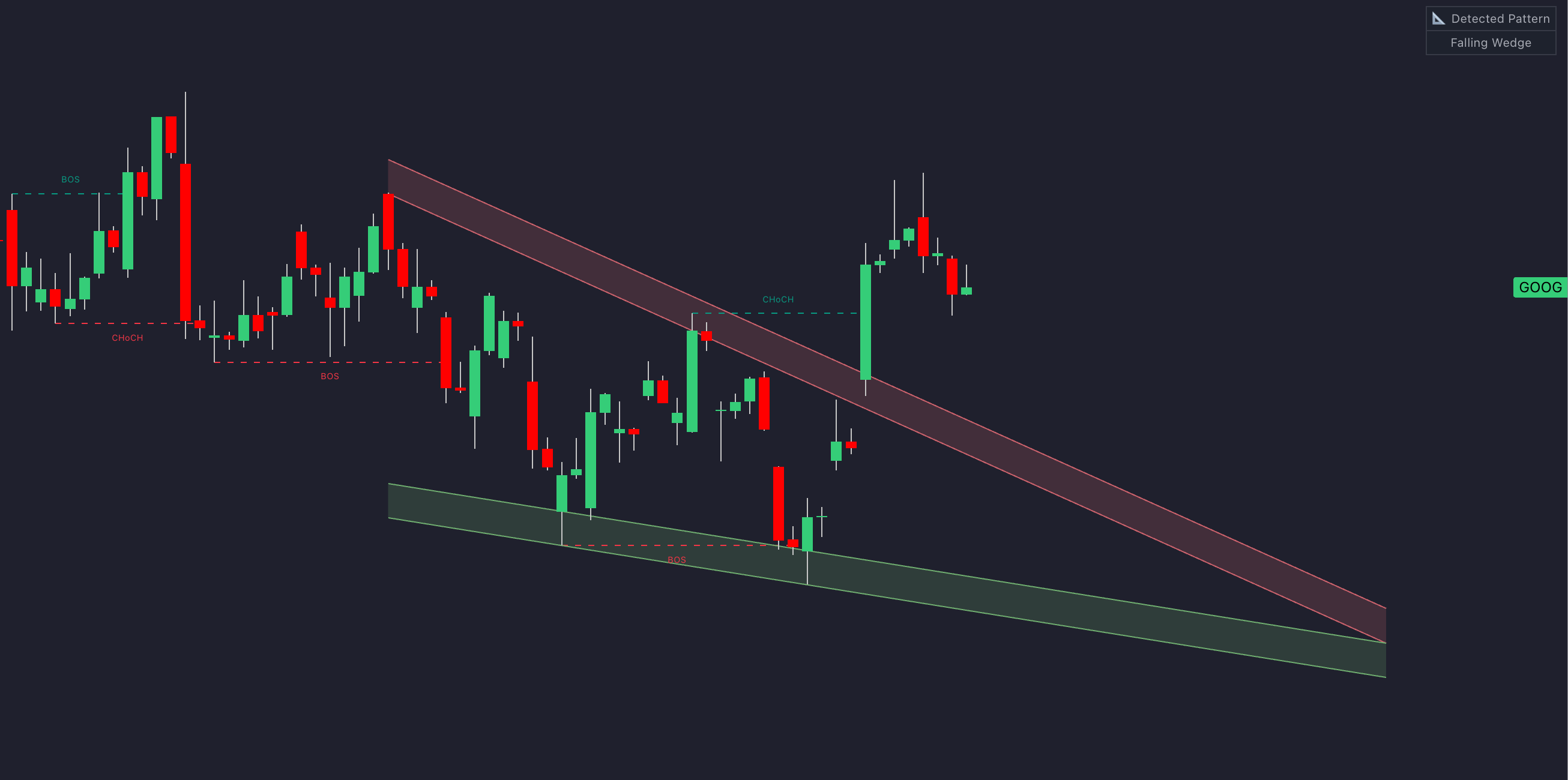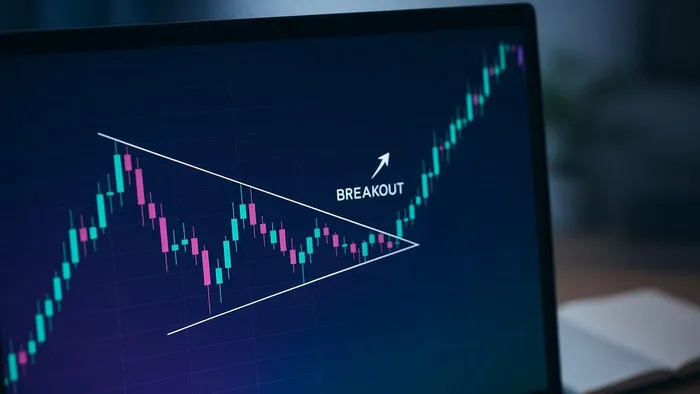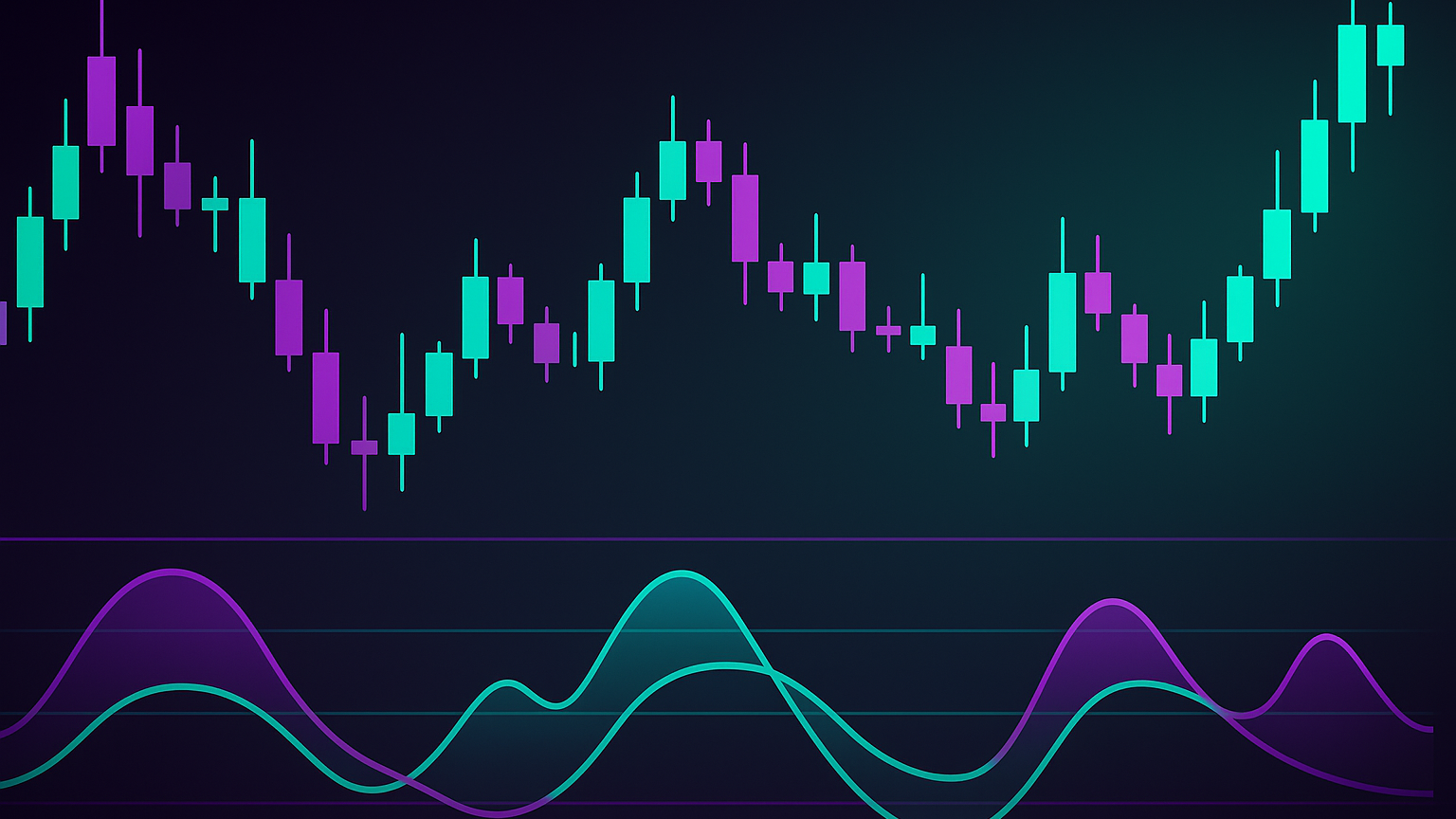Learn to identify and trade wedge patterns for effective market breakouts and reversals while managing risk with precision.
Wedge patterns are essential for spotting market breakouts and reversals. They form when price movements create converging trend-lines, signalling potential shifts in momentum. Here's what you need to know:
- Types of Wedges
- Rising Wedge: Signals bearish reversals, price breaks below support.
- Falling Wedge: Indicates bullish reversals, price breaks above resistance.
- Key Features
- Converging trend-lines.
- Decreasing volume during formation.
- A breakout confirmed by a volume spike.
- How to Trade
- Enter positions after a breakout and retest of trend-lines.
- Use stop-loss orders just beyond invalidation points.
- Aim for a risk-to-reward ratio of at least 1 : 2.
- Confirmation Resources
- Combine wedge patterns with volume analysis and indicators like RSI or MACD.
- Use automated resources from LuxAlgo for pattern detection and back-testing.
Understanding these patterns can help you time entries and exits effectively while managing risk. Patience is key, wait for clear breakouts before trading.
2 – Main Types of Wedge Patterns
Rising Wedges
A rising wedge forms when two upward-sloping trend-lines converge, with the lower support line climbing more steeply than the upper resistance line. This pattern often signals a bearish reversal, making it useful for timing short positions.
Take, for instance, the Vanguard Financials ETF (VFH) between 10 Oct 2022 and 20 Mar 2023. During this period the ETF displayed a rising wedge. Support came from higher lows at $72.96 and $80.37, while resistance was marked by higher highs at $88.83 and $90.87. A steady decline in trading volume supported the bearish signal and by 27 Mar 2023 the price had dropped to $74.09.
| Rising Wedge Characteristics | Signal Strength |
|---|---|
| Declining Volume | Strong Bearish |
| Steeper Support Line | Strong Bearish |
| Break Below Support | Confirmation |
| Higher Highs / Higher Lows | Pattern Formation |
Falling Wedges
Falling wedges are identified by two downward-sloping trend-lines, where the resistance line drops more sharply than the support line. This pattern typically suggests bullish potential, especially when accompanied by declining volume followed by a breakout with a volume surge.
“The falling wedge chart pattern is a recognisable price move formed when a market consolidates between two converging support and resistance lines. To form a descending wedge, the support and resistance lines have to both point downwards and the resistance line has to be steeper than the line of support.”
– Patrick Foot, Financial Writer
Falling wedges often lead to more reliable breakouts than their rising counterparts. After the breakout, the previous resistance level frequently transforms into a new support level.
Trend Patterns vs Reversals
Wedge patterns can signal either a trend reversal or continuation, depending on context:
- Reversal – At the end of a trend a rising wedge often points to a bearish reversal, while a falling wedge suggests a bullish reversal.
- Continuation – In a down-trend a rising wedge might indicate a temporary pause, while in an up-trend a falling wedge can signal brief consolidation.
These nuances allow traders to confirm wedge patterns more effectively by analysing support/resistance levels and volume behaviour.
Finding and Confirming Wedge Patterns
Drawing Support and Resistance Lines
To identify wedge patterns you need precise trend-lines. For a falling wedge connect the lower highs to establish the resistance line. In other wedges map the key price touch-points while focusing on the narrowing price range, or price compression.
| Trend-line Requirement | Validation Criteria |
|---|---|
| Minimum Touch Points | At least 3 per line |
| Pattern Duration | Several weeks |
| Line Convergence | Clear and consistent |
| Price Compression | Increasing over time |
Volume and Time Analysis
Volume trends are critical when confirming wedge patterns. Typically, as the pattern progresses, volume decreases, signalling a loss of momentum. A sudden spike in volume during the breakout confirms the pattern’s strength.
Time also matters. Wedges forming over several weeks are generally more dependable than those developing quickly. Additionally, as prices compress more tightly, the likelihood of a strong breakout increases.
Spotting False Signals
Even after validating trend-lines and analysing volume guard against false signals:
- No significant volume increase during the breakout.
- Price fails to close above or below the trend-line.
- Trend-lines with inconsistent or insufficient touch-points.
- Weak price compression.
- Pattern not aligning with the broader market trend.
A wedge pattern is more credible when price consistently respects the trend-lines. In highly-volatile markets further confirmation can be achieved by observing whether price surpasses resistance levels after the breakout.
Trading Wedge Breakouts
Entry and Exit Points
Timing is everything when trading wedge breakouts. For a falling wedge consider entering long after a strong close above resistance followed by a confirming retest. For a rising wedge look to enter short after a decisive break below support and a confirming retest.
| Pattern Type | Entry Signal | Exit Target |
|---|---|---|
| Falling Wedge | Break above resistance + retest | Pattern origin or previous swing highs |
| Rising Wedge | Break below support + retest | Previous swing lows |
A practical example comes from the EUR/USD daily chart where a rising wedge formed over ten months. Traders who waited for the retest of former support, now resistance, pinpointed ideal entries while controlling risk.
Stop-Loss Rules
Proper stop-loss placement is key. For bullish breakouts place the stop just below the breakout level. For bearish breakouts place the stop slightly above the last swing high. If a pin-bar forms during the retest set the stop just beyond its tail.
“Always place your stop-loss in an area where the setup can be considered invalidated if hit.” – Justin Bennett
Risk Management
A solid risk-management plan is essential. Aim for a risk-to-reward ratio of at least 1 : 2. To refine your strategy:
- Measure wedge height to estimate potential breakout range.
- Set profit targets at least twice the stop distance.
- Limit risk to 1–2 % of account equity per trade.
- Adjust position size based on volatility.
As trades progress consider using a trailing stop to lock in profits.
LuxAlgo Indicators for Wedge Trading

Price Action Concepts (PAC) Setup
The PAC Toolkit automates wedge-pattern detection by identifying converging trend-lines. To confirm a wedge the system requires five key touch-points (three on one line, two on the other). Visual alerts let traders spot emerging patterns early and reduce the chance of missed opportunities.
| Confirmation Element | PAC Analysis |
|---|---|
| Trend-Line Touches | At least 5 points (3 + 2) |
| Volume Profile | Should decrease during formation |
| Breakout Alert | Price must move beyond trend-lines with a volume spike |
| Pattern Duration | Validates timeframe |
Oscillator Matrix Signals
After a wedge is identified the Oscillator Matrix confirms momentum. It blends popular indicators (RSI, MACD, Stochastic) to strengthen breakout signals.
- Identify bullish or bearish divergences matching the wedge direction.
- Look for overbought or oversold readings as the pattern nears completion.
- Confirm momentum during breakout attempts.
Back-Testing with LuxAlgo AI
The AI Back-Testing Assistant, LuxAlgo’s AI agent for creating trading strategies, evaluates wedge tactics across market conditions. By analysing historical data it provides detailed performance metrics.
- Entry rules based on confirmed breakouts.
- Stop-loss placement variations.
- Risk-to-reward optimisation.
- Volume thresholds for breakout validation.
Comprehensive metrics such as win-rate, average return, maximum draw-down and risk-adjusted ratios help refine wedge trading strategies. For live use the AI engine is accessed at luxalgo.com/backtesting.
Mastering the Wedge Pattern in Trading – Theory, Psychology & Real Market Examples
Summary
To excel in wedge trading grasp pattern formation and manage risk precisely. Falling wedges often point to bullish reversals while rising wedges hint at bearish trends.
| Trading Component | Key Takeaways | Risk Management |
|---|---|---|
| Volume Profile | Volume should decline during formation then spike on breakout. | Set strict invalidation levels. |
| Breakout Confirmation | Look for clear volume increase. | Stop-loss just beyond last swing. |
| Time Duration | Patterns typically develop over 3–6 months. | Plan exits with defined targets. |
Patience is critical, wait for a clear breakout before entry. Always set stop-losses at invalidation points and limit risk to ≤ 2 % of account equity. Combining disciplined risk management with automated LuxAlgo indicators helps navigate wedge breakouts confidently.
FAQs
How can I tell if a breakout from a wedge pattern is real or fake?
A real breakout shows a decisive close beyond the wedge boundary, the broken level flips to support or resistance and volume rises. A fake breakout briefly pierces the boundary but snaps back without a volume surge.
How does trading volume help confirm wedge pattern breakouts?
During wedge formation volume usually tapers, reflecting indecision. A genuine breakout often arrives with a pronounced volume spike, signalling commitment and improving confidence in the move.
How can I use LuxAlgo indicators to improve my wedge-pattern strategy?
LuxAlgo provides indicators and analytics resources that identify ascending and descending wedges, evaluate breakouts and refine entries and exits. Combine PAC pattern detection with Oscillator Matrix momentum confirmation, then validate rules in the AI Back-Testing platform for the strongest results.
References
- Breakouts with Tests & Retests
- Reversal Candlestick Structure
- Oscillator Matrix Reversal Signals
- Volume Delta Candles
- Volumetric Toolkit
- LuxAlgo Homepage
- Managing Trade Risk
- Candle-Body Support & Resistance
- Dynamic Support & Resistance
- Range Breakout Signals
- Fibonacci Trailing Stop
- Volume Profile Maps
- Back-Testing AI Overview
- Fetching Strategies Guide
- AI Back-Testing Platform








